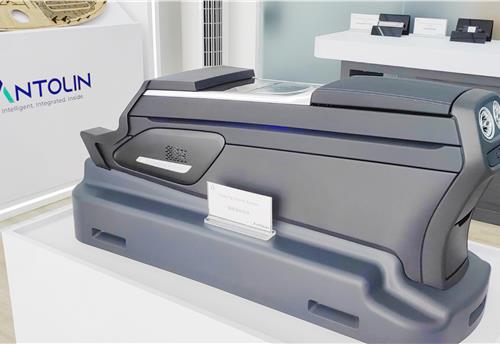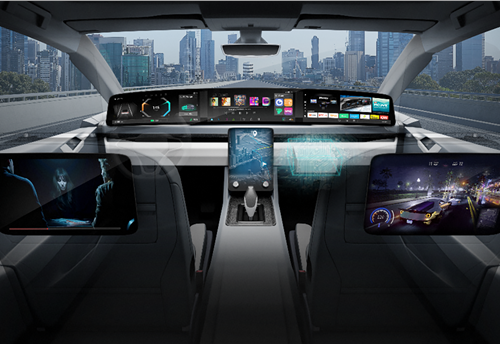Chinese car owners vote for turbocharging
Chinese car buyers are plumping for turbocharging as a route for achieving improved fuel efficiency as well as either maintaining the same or offering improved power.
Chinese car buyers are plumping for turbocharging as a route for achieving improved fuel efficiency as well as either maintaining the same or offering improved power. Honeywell Turbo Technologies predicts that by 2018, 26 percent of passenger vehicle sales in China will be turbocharged compared to 13 percent in 2013.
Results of a recent online survey conducted by the turbocharger manufacturer in China reveal only one-third of respondents are satisfied with their current vehicle’s fuel economy, and an overwhelming 80 percent seek fuel economy savings of at least 10 percent to be satisfied with their next vehicle purchase. The majority of consumers seeks gains of 10 to 30 percent in fuel economy but still want strong engine performance.
“The Chinese market continues to grow more sophisticated as increasing demand for fuel economy is coupled with consumers’ appreciation for smaller cars with advanced technology,” said David Paja, Honeywell Transportation Systems’ vice-president and general manager, China and India. “Honeywell is enabling this trend with the launch of more than 15 passenger vehicle turbocharger applications in the coming 15 months, for both domestic and global auto makers.”
The findings of the survey reveal that only one-third (33%) of respondents are satisfied with their current vehicle’s fuel economy, and an overwhelming 80 percent seek fuel economy savings of at least 10 to 30 percent to be satisfied with their next vehicle purchase.
In addition to a desire for more fuel economy, nearly 70 percent (68%) of respondents indicated they prefer to buy smaller cars if they perform like a car with a bigger engine. This was further underscored by 94 percent of respondents who indicated engine performance was an important or very important factor for purchasing a vehicle. Only one-third responded that they are currently satisfied with their vehicle’s drivability as measured by engine responsiveness and power when accelerating or torque.
Among the respondents, those who drive smaller vehicles (engine displacements less than 1.8 litres) are happier with their fuel economy (48% vs an average 33%), and those who drive a turbocharged vehicle show the highest satisfaction rate with their fuel economy (65%).
The online survey, sponsored by Honeywell, polled visitors of auto.163.com and yangche51.com, two of China’s popular automotive news and information portals, with a combined daily traffic of 340,000, to gauge consumer expectations of new vehicles coming to market.
“The average fuel consumption for passenger vehicles in China is 7.38 litres/100km, and the goal is to reach 5 litres/100km by 2020,” says Kevin Chen, director of Gasgoo Institute, co-organizer of the survey. “This is no doubt a big challenge for the Chinese auto makers, and many are looking to turbocharging as a practical and proven solution to closing the gap.”
Time to turbo?
Turbochargers enable a smaller engine to achieve the similar, if not improved, power outputs of larger naturally aspirated engines while being between 20 to 40 percent more fuel efficient in gasoline and diesel engines respectively. The smaller engine size also makes turbos a technology which can help auto makers meet stricter emissions standards.
Chinese consumers recognise the advantages of turbo technology as 45 percent indicated they would consider buying a turbocharged vehicle in the future. This reflects a significant increase from the 26 percent of respondents who currently drive one. Turbocharging is also a favourite among industry professionals as evidenced by a second survey sponsored by Honeywell and Gasgoo Institute of 1,824 industry professionals in early April. With 75 percent agreeing that maximizing the internal combustion engine remains the most viable option to achieve China’s fuel economy targets, turbocharging was selected the most effective technology worthy of broad adoption (43 percent) ahead of lightweighting (19 percent) and direct injection (14 percent).
In the Indian context, Milind Godbole, managing director, Honeywell Turbo Technologies India (HTT India) had recently told Autocar Professional that “the penetration of the turbocharger technology in the Indian passenger car market stands at 50 percent as against to 20 percent in China currently.” The company in India foresees the growth in compact sedans and compact SUVs, thereby driving the growth for petrol and diesel turbo tech in the passenger car segment. Specifically, the official expects a healthy market potential for turbocharger applications in 1.0-litre to 1.2-litre petrol engines and 1.2- to 1.5-litre diesel powertrains in India.
While HTT India has begun manufacturing petrol turbochargers at its Pune plant to cater to the local as well as export markets, the company is also keen on studying and observing the upcoming quadricycle segment to understand the relevant applications of turbo tech on smaller powertrains.
Also read: Honeywell begins manufacturing petrol turbochargers in India http://bit.ly/1r4OyA6
RELATED ARTICLES
Antolin unveils sustainable tech solutions at Beijing Motor Show
In line with its China market roadmap, Antolin is showcasing its latest advances in lighting, HMI, electronics, and sust...
Visteon wins $1.4 billion in new business in Q1 2024, launches 26 new products
Digitisation of vehicle cockpit megatrend is a key growth driver for Visteon with over $400 million of displays wins; Vi...
BMW uses Catena-X ecosystem using real-world CO2 data to enhance quality
Working together with partners and suppliers, the company has modelled a complete data chain for the first time using re...





 22 Jul 2014
22 Jul 2014
 2908 Views
2908 Views





 Autocar Pro News Desk
Autocar Pro News Desk




